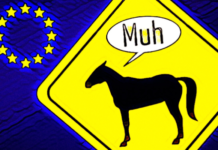The investigation launched by Great Italian Food Trade into compliance with regulations to protect information for allergic consumers continues. After Barilla’s Mulino Bianco, it is the turn of Nestlé. From bad to worse.
Nestlé, 13 allergens hidden in 3 labels
Three labels of products distributed by the Nestlé Group in Italy were examined:
– Nestlé Fitness original, ‘whole grain guaranteed‘. (1) Precautionary statement regarding allergens, (2) ‘may contain peanuts, nuts, milk‘,
– Nestlé dark chocolate, ‘dark chocolate‘. Gluten-free. ‘May contain milk and nuts‘.
And dulcis in fundo (an understatement),
– Nestlé Galak, white chocolate. ‘May contain cereals containing gluten and nuts‘.
However, the words ‘nuts’ -which recur on the three labels-hide 8 different allergenic ingredients. Precisely: almonds, hazelnuts, walnuts, cashews, pecans, Brazil nuts, pistachios, macadamia nuts, or Queensland walnuts. (3)
The label ‘cereals containing gluten’ on the Galak, in turn hides 5 allergenic ingredients: wheat, rye, barley, oats, spelt, kamut (or khorasan) and their hybridized strains. (4)
Legal Reflections
The requirement to specify the allergens in the product on the label was introduced in Europe back in 2003. The Food Information Regulation strengthened the protection of allergic consumers by requiringgraphic evidence of allergens in ingredient lists, (5) andinformation on foods fed by communities. (6)
The European Commission-Directorate General for Health and Food Safety-reiterated again in July 2017 how the above rules should be enforced. With special Guidelines stressing, among other things, that ‘the ingredient must be indicated with a clear reference to the specific name of the type of nut‘. And the same is true for individual gluten-containing grains.
It is dangerous to public health if the food lacks the proper information to ensure its safe consumption, including by vulnerable groups of consumers such as allergy sufferers and those with celiac disease. (7) Therefore, https://www.greatitalianfoodtrade.it/etichette/controlli-il-ruolo-dellamministrazione-sanitaria/ should require, including Nestlé, to change labels and take corrective measures on products already distributed. As well as applying any appropriate sanctions.
Legality and respect for consumers are the basis of the social pact that everyone must honor. SMEs as Big Food and regulators. From the latter, it is fair to expect diligent enforcement activity that has been lacking to date against a 77 billion euro group, (8) to safeguard food safety and combat fraud. (9)
Dario Dongo
Notes
(1) Whole grains ‘guaranteed’ in what sense? What distinguishes the cereals used by Nestlé from those used by competitors? The news escapes the average consumer, in possible violation of reg. EU 1169/11, Article 7.1.c
(2) C.d. Precautionary Allergen Labeling, PAL. See article.
(3) See reg. EU 1169/11, Annex II, point 8
(4) Idem c.s., item 1. The European Commission, in the Guidelines cited below, also listed spelta, among the hybridized species to be considered
(5) See reg. EU 1169/11, Article 21
(6) Ibid, Article 44.2
(7) See in this regard the notion of ‘food at risk’ offered by reg. EC 178/02, art. 14
(8) The Nestlé Group’s sales amount to approximately 77 billion euros (89.5 billion CHF to be exact, 2016 figures)
(9) Recall the marketing fraud perpetrated by San Pellegrino, Nestlé Group, on ‘cedar-free citron’. To this day unpunished, to the best of our knowledge.
Dario Dongo, lawyer and journalist, PhD in international food law, founder of WIISE (FARE - GIFT - Food Times) and Égalité.









